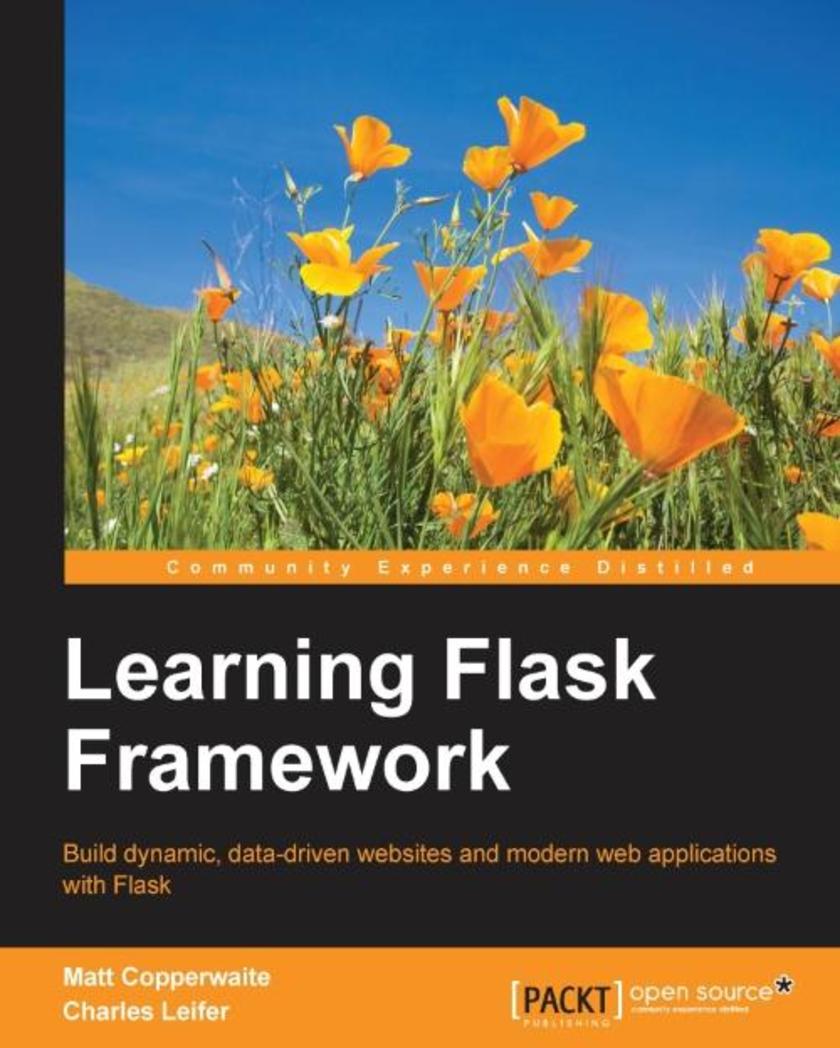
Learning Flask Framework
¥80.65
Build dynamic, data-driven websites and modern web applications with Flask About This Book Discover the most popular Flask resources on the web with ease Familiarize yourself with third-party libraries commonly used with Flask Create a fast, interactive, and secure web app with this hands-on guide Who This Book Is For This book is for anyone who wants to develop their knowledge of Python into something that can be used on the web. Flask follows the Python design principles and can be easily understood by anyone who knows Python, and even by those who do not. What You Will Learn Create your web pages to add modularity and flexibility to your web app using templates Store and retrieve relational data using SQLAlchemy Develop schema migrations with Alembic Produce an admin section using flask-admin Build RESTful APIs using Flask-Restless Simulate requests and sessions using the Flask test client Make Ajax requests from Jinja2 templates In Detail Flask is a small and powerful web development framework for Python. It does not presume or force a developer to use a particular tool or library. Flask supports extensions that can add application features as if they were implemented in Flask itself. Flask’s main task is to build web applications quickly and with less code. With its lightweight and efficient web development framework, Flask combines rapid development and clean, simple design. This book will take you through the basics of learning how to apply your knowledge of Python to the web. Starting with the creation of a “Hello world” Flask app, you will be introduced to the most common Flask APIs and Flask’s interactive debugger. You will learn how to store and retrieve blog posts from a relational database using an ORM and also to map URLs to views. Furthermore, you will walk through template blocks, inheritance, file uploads, and static assets. You will learn to authenticate users, build log in/log out functionality, and add an administrative dashboard for the blog. Moving on, you will discover how to make Ajax requests from the template and see how the Mock library can simplify testing complex interactions. Finally, you will learn to deploy Flask applications securely and in an automated, repeatable manner, and explore some of the most popular Flask resources on the web. Style and approach A comprehensive guide packed with real-world examples and popular use cases; starting with basic overviews and diving into the practical aspects of Flask Framework.
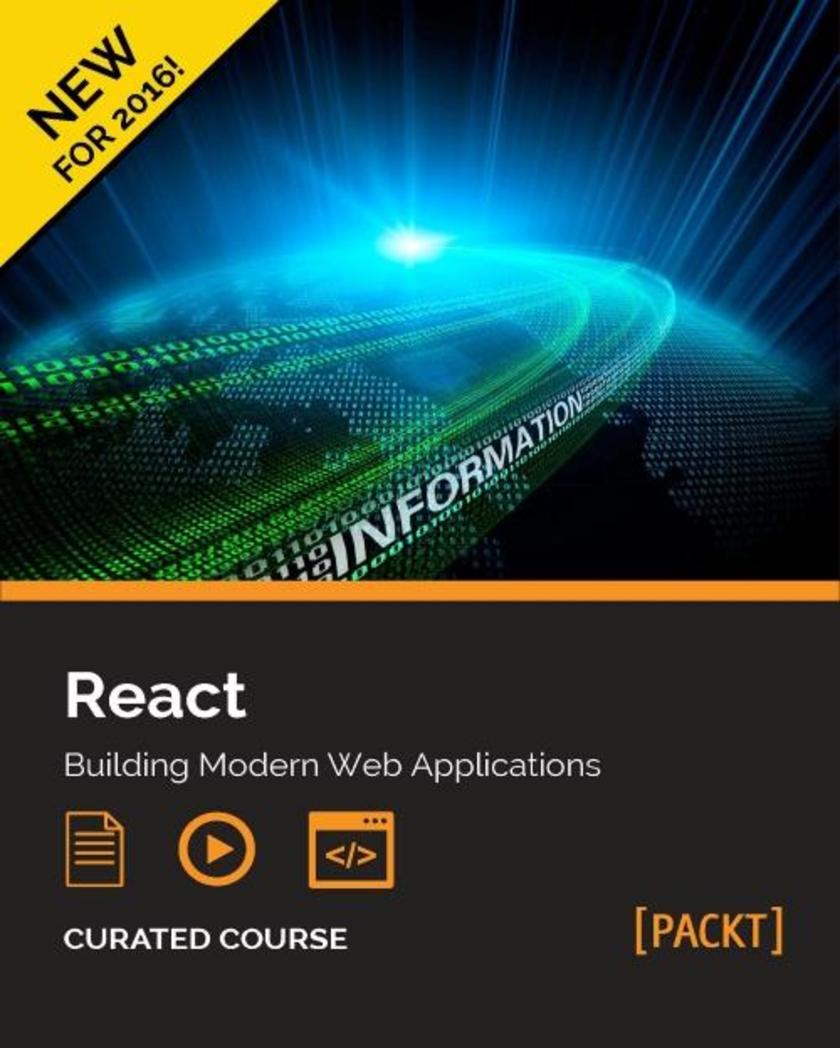
React: Building Modern Web Applications
¥171.12
Master the art of building dynamic, modern web applications with React About This Book Learn the hot new frontend web framework from Facebook – ReactJS, an easy way of developing the V in MVC and a better approach to software engineering in JavaScript A fast-paced guide to designing and building scalable and maintainable web apps with React.js Learn all the new ES6 features and be among the most prominent JavaScript developers who can write efficient JS programs as per the latest standards Master the art of building modern web applications using React Learn to build modern native iOS and Android applications using JavaScript and the incredible power of React Who This Book Is For This course is for web developers that want to unlock high performance dynamism in the applications that they create. If you want a comprehensive journey into one of the most important JavaScript frameworks around today, dive into this course. What You Will Learn Take control of the front end with reactive JavaScript programming Discover what ReactJS offers your development - before mastering it Create React elements with properties and children Use JSX to speed up your React development process Test your React components with the Jest test framework Learn the latest syntax of ES6 Execute ES6 in a non-supported ES6 environment Learn the principles of object-oriented programming Create a complete single-page application Use an application design plan to write smarter, more meaningful code Learn how to use animations to give extra style to your application Get to grips with the React Native environment Write your own custom native UI components Integrate native modules in Objective-C and Java that interact with JavaScript In Detail ReactJS has helped to transform the web as we know it. Designed by Facebook to help developers build rapid, responsive UI that can deal with data-intensive usage, it’s an essential component in any web developer’s skillset. This ReactJS course, in five connected modules, provides you with a fast, engaging and practical route into ReactJS—so you can build powerful, elegant, and modern web applications. Beginning with the Reactive Programming with JavaScript module, you will learn how to take advantage of a reactive and functional programming paradigm to rethink how you approach your JavaScript code. It’s built to help you understand the concepts, relevant and applicable for any frontend developer. You’ll then dive a little deeper into ReactJS. The second module gives you a rapid look through the fundamentals of ReactJS, showing you how to build a basic application and demonstrating how to implement the Flux architecture. In the third module you will get to grips with ES6—this will make you a more fluent JavaScript developer, giving you control over ReactJS. You can put your old JavaScript hacks aside and instead explore how to create ES6 custom iterators. In the final two modules you’ll learn how to fully master ReactJS, exploring its wider ecosystem of tools that have helped to make it one of the most important tools in web development today. Ending with insights and guidance on React Native, the tool built for today’s demand for native, intuitive user experiences and interfaces, with this course you can be confident in building dynamic and modern apps with React. Style and approach Consisting of five separate modules, journey from the fundamentals of reactive programming to the exciting possibilities of React Native. Each module builds on each other, helping you to incrementally develop your skills and knowledge.

3D Printing Designs: Fun and Functional Projects
¥54.49
Get to grips with 3D printing and learn to model designs using Blender About This Book From the author who brought you the first practical look at 3D printing with 3D Printing Blueprints Get a comprehensive coverage of the prototyping techniques you need to know to start printing your own 3D designs Rekindle your mathematical genius to design personalized objects for complex puzzles Who This Book Is For If you’re new to the world of 3D printing, this is the book for you. Some basic knowledge of Blender and geometry would be helpful, but is not necessary. What You Will Learn Get to know about the different types of 3D printers and their limitations See how Y, H, and T shapes illustrate different ideas of successful 3D design for home 3D printers Set up and configure Blender to model a file for 3D printing Understand material characteristics, printing specifications, tolerances, and design tips Work through the techniques of editing complex meshes, smoothing, combining shapes, and exporting them into STL files for printing Break down complex geometries into multiple simple shapes and model them in layers using Blender Design, manipulate, and export 3D models for 3D printing with Blender Master the art of creating meshes, scaling, subdivision, and adding detail with the Boolean modifier as well as sculpting a custom shape Cut a model into small pieces and understand how to design complex interlocking joints that form a part of a jigsaw puzzle In Detail 3D printing has revolutionized the way that global industries conceptualize and design products for mass consumption. Considered as the next “trillion-dollar” business, every industry is in the race to equip its personnel with techniques to prototype and simplify complex manufacturing process. This book will take you through some simple to complex and effective principles of designing 3D printed objects using Blender. There is a comprehensive coverage of projects such as a 3D print-ready octopus pencil holder, which will teach you how to add basic geometric shapes, and use techniques such as extruding and subdividing to transform these shapes into complex meshes. Furthermore, you’ll learn to use various techniques to derive measurements for an object, model these objects using Blender, organize the parts into layers, and later combine them to create the desired object with the help of a 3D printable SD card holder ring design project. The final project will help you master the techniques of designing simple to complex puzzles models for 3D printing. Through the course of the book, we'll explore various robust sculpting methods supported by Blender to create objects. You’ll move, rotate, and scale the object, and manipulate the view. You’ll edit objects with actions such as bends or curves, similar to drawing or building up a clay structure of different shapes and sizes. By the end of the book, you will have gained thorough practical hands-on experience to be able to create a real-world 3D printable object of your choice. Style and approach This is a hands-on guide to the world of 3D printing. With the help of simple to complex projects, you'll learn various techniques to design 3D printable objects using Blender.
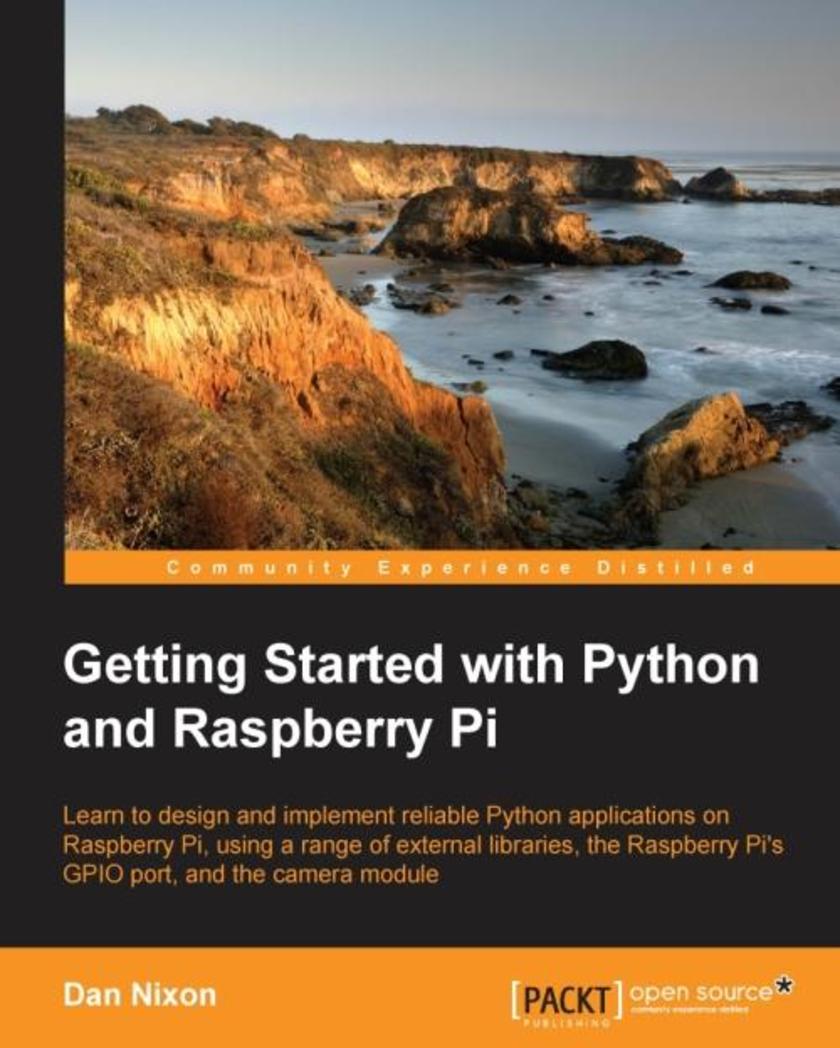
Getting Started with Python and Raspberry Pi
¥71.93
Learn to design and implement reliable Python applications on the Raspberry Pi using a range of external libraries, the Raspberry Pis GPIO port, and the camera module About This Book Learn the fundamentals of Python *ing and application programming Design user-friendly command-line and graphical user interfaces A step-by-step guide to learning Python programming with the Pi Who This Book Is For This book is designed for those who are unfamiliar with the art of Python development and want to get to know their way round the language and the many additional libraries that allow you to get a full application up and running in no time. What You Will Learn Fundamentals of Python applications Designing applications for multi-threading Interacting with electronics and physical devices Debugging applications when they go wrong Packaging and installing Python modules User interface design using Qt Building easy to use command-line interfaces Connecting applications to the Internet In Detail The Raspberry Pi is one of the smallest and most affordable single board computers that has taken over the world of hobby electronics and programming, and the Python programming language makes this the perfect platform to start coding with. The book will start with a brief introduction to Raspberry Pi and Python. We will direct you to the official documentation that helps you set up your Raspberry Pi with the necessary equipment such as the monitor, keyboard, mouse, power supply, and so on. It will then dive right into the basics of Python programming. Later, it will focus on other Python tasks, for instance, interfacing with hardware, GUI programming, and more. Once you get well versed with the basic programming, the book will then teach you to develop Python/Raspberry Pi applications. By the end of this book, you will be able to develop Raspberry Pi applications with Python and will have good understanding of Python programming for Raspberry Pi. Style and approach An easy-to-follow introduction to Python *ing and application development through clear conceptual explanations backed up by real-world examples on the Raspberry Pi.

Blender 3D By Example
¥80.65
Design a complete workflow with Blender to create stunning 3D scenes and films step-by-step! About This Book Give life to a character within a full animated short film by learning the rigging and animation process Make use of the powerful tools available in Blender to produce professional-quality 3D characters and environments Discover advanced techniques by adding fur to a character, creating a grass field, and fine-tuning a shot with post-processing effects to enhance your creations Who This Book Is For This book will give any beginner the necessary skills and knowledge to create own 3D projects with Blender. You don't need to have any previous experience in 3D modeling, but if you do, then this book is a great way get you started with Blender. This book is for anyone who wants to learn Blender by creating concrete projects. What You Will Learn Understand the basics of 3D and how to navigate your way around the Blender interface Create a 3D robot toy model from start to finish using the basic modeling tools of Blender Make a full alien character using the skin mesh modifier and the sculpting tools with an artistic approach Use re-topology techniques to create a clean 3D version of the previously sculpted alien Model a full haunted house and its environment using more advanced modeling tools and techniques such as the Array Modifier, Instance duplication, or Curves Discover the power of the texture paint tool in order to add color to the haunted house Get to know the Cycles render engine by creating different materials for the house and the environment In Detail Blender is a powerful tool, stable, with an integral workflow that will allow you to understand your learning of 3D creation with serenity. Today, it is considered to be one of the most complete 3D packages on the market and it is free and open source! It is very efficient for many types of productions, such as 3D animated or live action films, architecture, research, or even game creation with its integrated game engine and its use of the Python language. Moreover, Blender has an active community that contributes to expanding its functionalities. Today, it is used in many professional products and by many companies. Through this book, you will create many types of concert projects using a step-by-step approach. You will start by getting to know the modeling tools available in Blender as you create a 3D robot toy. Then, you will discover more advanced techniques such as sculpting and re-topology by creating a funny alien character. After that, you will create a full haunted house scene. For the last project, you will create a short film featuring a rat cowboy shooting cheese in a rat trap! This will be a more complex project in which you learn how to rig, animate, compose advanced material, composite, and edit a full sequence. Each project in this book will give you more practice and increase your knowledge of the Blender tools. By the end of this book, you will master a workflow that you will be able to apply to your own creations. Style and approach This is an easy-to-follow book that is based on four concrete projects, with increasing levels of difficulty. Each chapter will teach you how to create these projects step-by-step. New tools and techniques are introduced in a theoretical and practical way, so you can apply them in your own projects later.
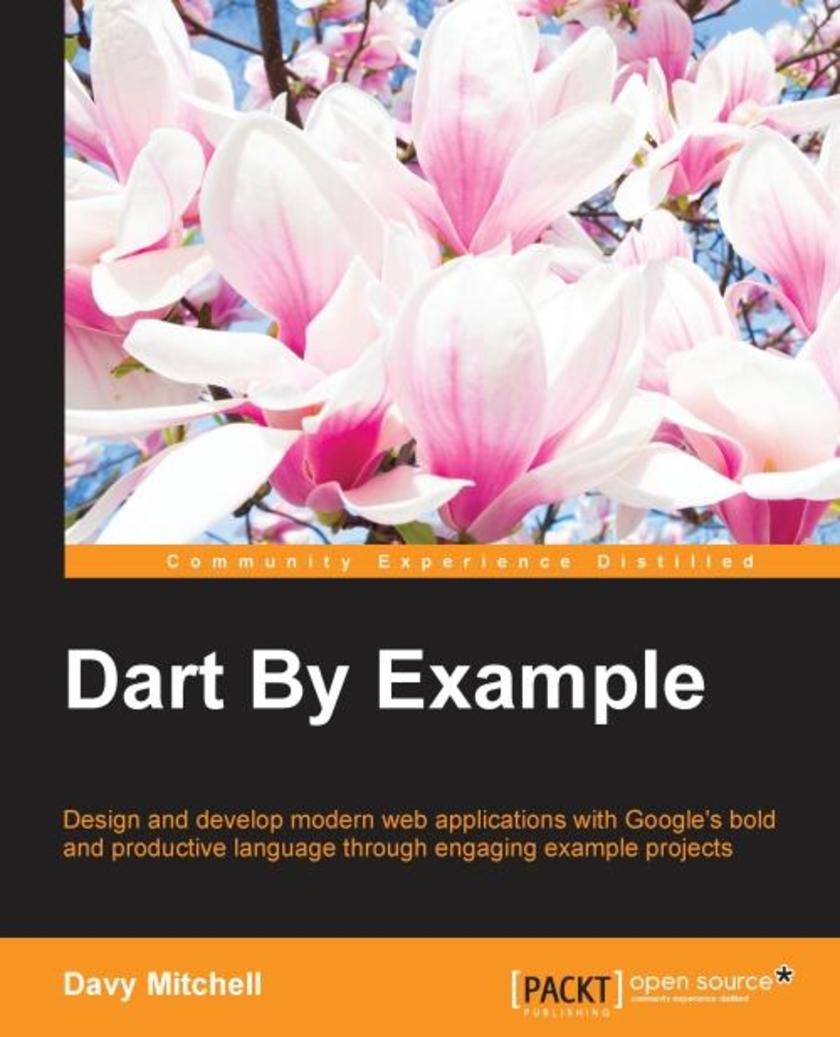
Dart By Example
¥80.65
Design and develop modern web applications with Google's bold and productive language through engaging example projects About This Book Full of engaging and varied example projects to equip you to build your own web applications Learn the Dart language and key libraries Productively create fast and reliable web applications Who This Book Is For If you are a front- or back-end web developer who is looking to build complex full-featured web applications without the quagmire of disconnected JavaScript frameworks, this book is a practical walkthrough of substantial applications that will have you and your team coding Dart in a productive manner. This book will give you a compiled, optional typed, scalable environment to rapidly develop applications. As Dart was designed to be familiar, any developer with even a small amount of knowledge of JavaScript or another programming language will be at home with the language immediately and will be coding quickly. What You Will Learn Master the core Dart language, type system, and key development tools Connect to existing web services, process JSON, and create your own framework for the data display Run and debug the Dart server and web applications and compile them in JavaScript Handle form data and encryption Build and deploy server applications on the major OSes and implement the REST API Work with PostgreSQL—an industry standard relational database system Create robust applications with unit tests, documentation, and diagnostic logging Develop command-line applications, and explore the key data structures and libraries In Detail Designed to create next generation apps, Google’s Dart offers a much more robust framework and also supersedes JavaScript in several aspects. Familiar yet innovative, compact yet scalable, it blows away the accumulated JavaScript legacy limitations. Dart was designed for great tool-ability and developer productivity, allowing you to create better application faster than before. Google chose it for their billion dollar advertising business and you have its power for your projects too. This book will introduce you the Dart language starting from its conception to its current form, and where it headed is through engaging substantial practical projects. You will be taken through building typical applications and exploring the exciting new technologies of HTML5. With example code projects such as a live data monitoring and viewing system, a blogging system, a slides presentation application, and more, then this book will walk you through step by step through building data-driven web applications with ease and speed. Style and approach A varied collection of compelling practical Dart projects that are developed progressively with full explanations of concepts and implementation. Each project introduces features of the language and environment, demonstrating how Dart can be used in rich structured web applications.

Groovy for Domain-specific Languages - Second Edition
¥90.46
Extend and enhance your Java applications with domain-specific *ing in Groovy About This Book Build domain-specific mini languages in Groovy that integrate seamlessly with your Java apps with this hands-on guide Increase stakeholder participation in the development process with domain-specific *ing in Groovy Get up to speed with the newest features in Groovy using this second edition and integrate Groovy-based DSLs into your existing Java applications. Who This Book Is For This book is for Java software developers who have an interest in building domain *ing into their Java applications. No knowledge of Groovy is required, although it will be helpful. This book does not teach Groovy, but quickly introduces the basic ideas of Groovy. An experienced Java developer should have no problems with these and move quickly on to the more involved aspects of creating DSLs with Groovy. No experience of creating a DSL is required. What You Will Learn Familiarize yourself with Groovy *ing and work with Groovy closures Use the meta-programming features in Groovy to build mini languages Employ Groovy mark-up and builders to simplify application development Familiarize yourself with Groovy mark-up and build your own Groovy builders Build effective DSLs with operator overloading, command chains, builders, and a host of other Groovy language features Integrate Groovy with your Java and JVM based applications In Detail The times when developing on the JVM meant you were a Java programmer have long passed. The JVM is now firmly established as a polyglot development environment with many projects opting for alternative development languages to Java such as Groovy, Scala, Clojure, and JRuby. In this pantheon of development languages, Groovy stands out for its excellent DSL enabling features which allows it to be manipulated to produce mini languages that are tailored to a project’s needs. A comprehensive tutorial on designing and developing mini Groovy based Domain Specific Languages, this book will guide you through the development of several mini DSLs that will help you gain all the skills needed to develop your own Groovy based DSLs with confidence and ease. Starting with the bare basics, this book will focus on how Groovy can be used to construct domain specific mini languages, and will go through the more complex meta-programming features of Groovy, including using the Abstract Syntax Tree (AST). Practical examples are used throughout this book to de-mystify these seemingly complex language features and to show how they can be used to create simple and elegant DSLs. Packed with examples, including several fully worked DSLs, this book will serve as a springboard for developing your own DSLs. Style and approach This book is a hands-on guide that will walk you through examples for building DSLs with Groovy rather than just talking about "metaprogramming with Groovy". The examples in this book have been designed to help you gain a good working knowledge of the techniques involved and apply these to producing your own Groovy based DSLs.
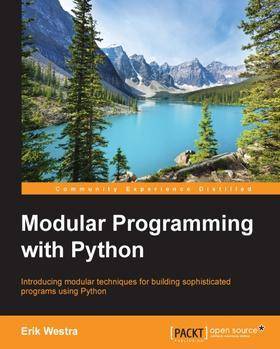
Modular Programming with Python
¥297.10
Introducing modular techniques for building sophisticated programs using PythonAbout This Book·The book would help you develop succinct, expressive programs using modular deign·The book would explain best practices and common idioms through carefully explained and structured examples·It will have broad appeal as far as target audience is concerned and there would be take away for all beginners to PythonWho This Book Is ForThis book is intended for beginner to intermediate level Python programmers who wish to learn how to use modules and packages within their programs. While readers must understand the basics of Python programming, no knowledge of modular programming techniques is required.What You Will Learn·Learn how to use modules and packages to organize your Python code·Understand how to use the import statement to load modules and packages into your program·Use common module patterns such as abstraction and encapsulation to write better programs·Discover how to create self-testing Python packages·Create reusable modules that other programmers can use·Learn how to use GitHub and the Python Package Index to share your code with other people·Make use of modules and packages that others have written·Use modular techniques to build robust systems that can handle complexity and changing requirements over timeIn DetailPython has evolved over the years and has become the primary choice of developers in various fields. The purpose of this book is to help readers develop readable, reliable, and maintainable programs in Python.Starting with an introduction to the concept of modules and packages, this book shows how you can use these building blocks to organize a complex program into logical parts and make sure those parts are working correctly together.Using clearly written, real-world examples, this book demonstrates how you can use modular techniques to build better programs. A number of common modular programming patterns are covered, including divide-and-conquer, abstraction, encapsulation, wrappers and extensibility. You will also learn how to test your modules and packages, how to prepare your code for sharing with other people, and how to publish your modules and packages on GitHub and the Python Package Index so that other people can use them. Finally, you will learn how to use modular design techniques to be a more effective programmer.Style and approachThis book will be simple and straightforward, focusing on imparting learning through a wide array of examples that the readers can put into use as they read through the book. They should not only be able to understand the way modules help in improving development, but they should also be able to improvise on their techniques of writing concise and effective code.
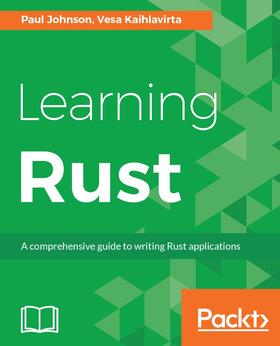
Learning Rust:A comprehensive guide to writing Rust applications
¥334.25
Start building fast and robust applications with the power of Rust by your sideAbout This Book·Get started with the language to build scalable and high performance applications·This book will help C#/C++ developers gain better performance and memory management·Discover the power of Rust when developing concurrent applications for large and scalable softwareWho This Book Is ForThe book is for absolute beginners to Rust, who want to build high performance, concurrent applications for their projects. It is suitable for developers who have a basic knowledge of programming and developers who are using the C#/C++ language to write their applications. No knowledge of Rust is expected.What You Will Learn·Set up Rust for Windows, Linux, and OS X·Write effective code using Rust·Expand your Rust applications using libraries·Interface existing non-Rust libraries with your Rust applications·Use the standard library within your applications·Understand memory management within Rust and speed efficiency when passing variables·Create more complex data types·Study concurrency in Rust with multi-threaded applications and sync threading techniques to improve the performance of an application problemIn DetailRust is a highly concurrent and high performance language that focuses on safety and speed, memory management, and writing clean code. It also guarantees thread safety, and its aim is to improve the performance of existing applications. Its potential is shown by the fact that it has been backed by Mozilla to solve the critical problem of concurrency.Learning Rust will teach you to build concurrent, fast, and robust applications. From learning the basic syntax to writing complex functions, this book will is your one stop guide to get up to speed with the fundamentals of Rust programming. We will cover the essentials of the language, including variables, procedures, output, compiling, installing, and memory handling.You will learn how to write object-oriented code, work with generics, conduct pattern matching, and build macros. You will get to know how to communicate with users and other services, as well as getting to grips with generics, scoping, and more advanced conditions. You will also discover how to extend the compilation unit in Rust.By the end of this book, you will be able to create a complex application in Rust to move forward with.Style and approachThis comprehensive book will focus on the Rust syntax, functions, data types, and conducting pattern matching for programmers. It is divided into three parts and each part of the book has an objective to enable the readers to create their own applications at an appropriate level, ultimately towards creating complex applications.
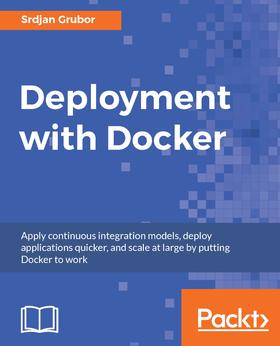
Deployment with Docker
¥297.10
A practical guide to rapidly and efficiently mastering Docker containers, along with tips and tricks learned in the field.About This Book·Use Docker containers, horizontal node scaling, modern orchestration tools (Docker Swarm, Kubernetes, and Mesos) and Continuous Integration/Continuous Delivery to manage your infrastructure.·Increase service density by turning often-idle machines into hosts for numerous Docker services.·Learn what it takes to build a true container infrastructure that is scalable, reliable, and resilient in the face of increased complexities from using container infrastructures.·Find out how to identify, debug, and mitigate most real-world, undocumented issues when deploying your own Docker infrastructure.·Learn tips and tricks of the trade from existing Docker infrastructures running in production environments.Who This Book Is ForThis book is aimed at system administrators, developers, DevOps engineers, and software engineers who want to get concrete, hands-on experience deploying multi-tier web applications and containerized microservices using Docker. This book is also for anyone who has worked on deploying services in some fashion and wants to take their small-scale setups to the next level (or simply to learn more about the process).What You Will Learn·Set up a working development environment and create a simple web service to demonstrate the basics·Learn how to make your service more usable by adding a database and an app server to process logic·Add resilience to your services by learning how to horizontally scale with a few containers on a single node·Master layering isolation and messaging to simplify and harden the connectivity between containers·Learn about numerous issues encountered at scale and their workarounds, from the kernel up to code versioning·Automate the most important parts of your infrastructure with continuous integrationIn DetailDeploying Docker into production is considered to be one of the major pain points in developing large-scale infrastructures, and the documentation available online leaves a lot to be desired. With this book, you will learn everything you wanted to know to effectively scale your deployments globally and build a resilient, scalable, and containerized cloud platform for your own use.The book starts by introducing you to the containerization ecosystem with some concrete and easy-to-digest examples; after that, you will delve into examples of launching multiple instances of the same container. From there, you will cover orchestration, multi-node setups, volumes, and almost every relevant component of this new approach to deploying services. Using intertwined approaches, the book will cover battle-tested tooling, or issues likely to be encountered in real-world scenarios, in detail. You will also learn about the other supporting components required for a true PaaS deployment and discover common options to tie the whole infrastructure together.At the end of the book, you learn to build a small, but functional, PaaS (to appreciate the power of the containerized service approach) and continue to explore real-world approaches to implementing even larger global-scale services.Style and approachThis in-depth learning guide shows you how to deploy your applications in production using Docker (from the basic steps to advanced concepts) and how to overcome challenges in Docker-based infrastructures. The book also covers practical use-cases in real-world examples, and provides tips and tricks on the various topics.
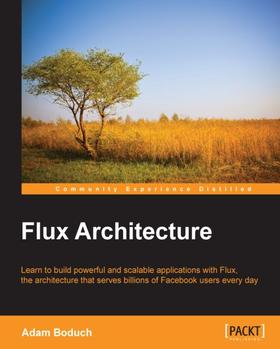
Flux Architecture
¥334.25
Learn to build powerful and scalable applications with Flux, the architecture that serves billions of Facebook users every dayAbout This Book·This the first resource dedicated to the new architectural pattern that powers Facebook·You'll learn all the tips and tricks you need to get the most out of Flux·Filled with practical, hands-on samples, you'll not only understand how Flux works, but will be able to start building Flux-powered applications straight away·Written by Adam Boduch, software architect at Virtustream (EMC), and author of JavaScript at Scale, JavaScript Concurrency, and jQuery UI Cookbook for Packt PublishingWho This Book Is ForAre you trying to use React, but are struggling to get your head around Flux? Maybe you're tired of MV* spaghetti code at scale? Do you find yourself asking what the Flux?!Flux Architecture will guide you through everything you need to understand the Flux pattern, and design and build powerful web applications that rely on the Flux architecture.You don't need to know what Flux is or how it works to read along with the book. No knowledge of Flux's partner technology, ReactJS, is necessary to follow along, but it is recommended that you have a good working knowledge of JavaScript.What You Will Learn·Understand the Flux pattern and how it will impact your React applications·Build real-world applications that rely on Flux·Handle asynchronous actions in your application·Implement immutable stores with Immutable.js·Replace React.js with alternate View components such as jQuery and Handlebars·Test and benchmark your Flux architecture using Jest—Facebook's enhancement of the Jasmine libraryIn DetailWhilst React has become Facebook's poster-child for clean, complex, and modern web development, it has quietly been underpinned by its simplicity. It's just a view. The real beauty in React is actually the architectural pattern that handles data in and out of React applications: Flux. With Flux, you're able to build data-rich applications that engage your users, and scale to meet every demand. It is a key part of the Facebook technology stack that serves billions of users every day.This book will start by introducing the Flux pattern and help you get an understanding of what it is and how it works. After this, we'll build real-world React applications that highlight the power and simplicity of Flux in action. Finally, we look at the landscape of Flux and explore the Alt and Redux libraries that make React and Flux developments easier.Filled with fully-worked examples and code-first explanations, by the end of the book, you'll not only have a rock solid understanding of the architecture, but will be ready to implement Flux architecture in anger.Style and approachThis book is filled with practical, hands-on examples. You'll not only understand how Flux works, but will be able to start building Flux-powered applications straight away.

RESTful Web API Design with Node.js - Second Edition
¥222.81
Design and implement efficient RESTful solutions with this practical hands-on guideAbout This Book·Create a fully featured RESTful API solution from scratch.·Learn how to leverage Node.JS, Express, MongoDB and NoSQL datastores to give an extra edge to your REST API design.·Use this practical guide to integrate MongoDB in your Node.js application.Who This Book Is ForThe ideal target audience for this book is web developers who have some experience with RESTful services. Familiarity with basic JavaScript programming techniques is required. No prior experience with Node.JS or Express.js is required.What You Will Learn·Install, develop, and test your own Node.js user modules·Comprehend the differences between an HTTP and a RESTful application·Optimize RESTful service URI routing with best practices·Eliminate third-party dependencies in your tests with mocking·Learn about NoSQL data stores and integrate MongoDB in your Node.js application with Mongoose·Secure your services with NoSQL database integration within Node.js applications·Enrich your development skills to create scalable, server-side, RESTful applications based on the Node.js platformIn DetailIn this era of cloud computing, every data provisioning solution is built in a scalable and fail-safe way. Thus, when building RESTful services, the right choice for the underlying platform is vital. Node.js, with its asynchronous, event-driven architecture, is exactly the right choice to build RESTful APIs.This book will help you enrich your development skills to create scalable, server-side, RESTful applications based on the Node.js platform.Starting with the fundamentals of REST, you will understand why RESTful web services are better data provisioning solution than other technologies. You will start setting up a development environment by installing Node.js, Express.js, and other modules. Next, you will write a simple HTTP request handler and create and test Node.js modules using automated tests and mock objects. You will then have to choose the most appropriate data storage type, having options between a key/value or document data store, and also you will implement automated tests for it. This module will evolve chapter by chapter until it turns into a full-fledged and secure Restful service.Style and approachCreate state of the art RESTful API solutions leveraging Node.JS 4.x.
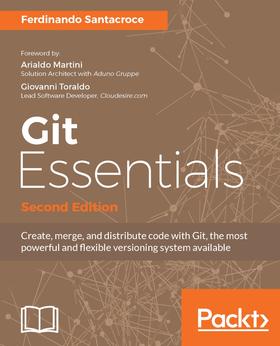
Git Essentials - Second Edition
¥259.95
Dive and explore into the latest addons of the latest Git.About This Book·Master all the basic concepts of Git to protect your code and make it easier to evolve·Use Git proficiently, and learn how to resolve day-by-day challenges easily·This step-by-step guide is packed with examples to help you learn and work with Git's internalsWho This Book Is ForIf you are a software developer with little or no experience of versioning systems, or you are familiar with other centralized versioning systems, then this book is for you.If you have experience in server and system management and need to broaden your use of Git from a DevOps perspective, this book contains everything you need.What You Will Learn·Master Git fundamentals·Be able to "visualize," even with the help of a valid GUI tool·Write principal commands in a shell·Figure out the right strategy to run change your daily work with few or no annoyances·Explore the tools used to migrate to Git from the Subversion versioning system without losing your development history·Plan new projects and repositories with ease, using online services, or local network resourcesIn DetailSince its inception, Git has attracted skilled developers due to its robust, powerful, and reliable features. Its incredibly fast branching ability transformed a piece of code from a niche tool for Linux Kernel developers into a mainstream distributed versioning system. Like most powerful tools, Git can be hard to approach since it has a lot of commands, subcommands, and options that easily confuse newcomers.The 2nd edition of this very successful book will help you overcome this fear and become adept in all the basic tasks in Git. Building upon the success of the first book, we start with a brief step-by-step installation guide; after this, you'll delve into the essentials of Git. For those of you who have bought the first edition, this time we go into internals in far greater depth, talking less about theory and using much more practical examples.The book serves as a primer for topics to follow, such as branching and merging, creating and managing a GitHub personal repository, and fork and pull requests. You'll then learn the art of cherry-picking, taking only the commits you want, followed by Git blame. Finally, we'll see how to interoperate with a Subversion server, covering the concepts and commands needed to convert an SVN repository into a Git repository.To conclude, this is a collection of resources, links, and appendices to satisfy even the most curious.Style and approachThis short guide will help you understand the concepts and fundamentals of GIT is a step-by-step manner.
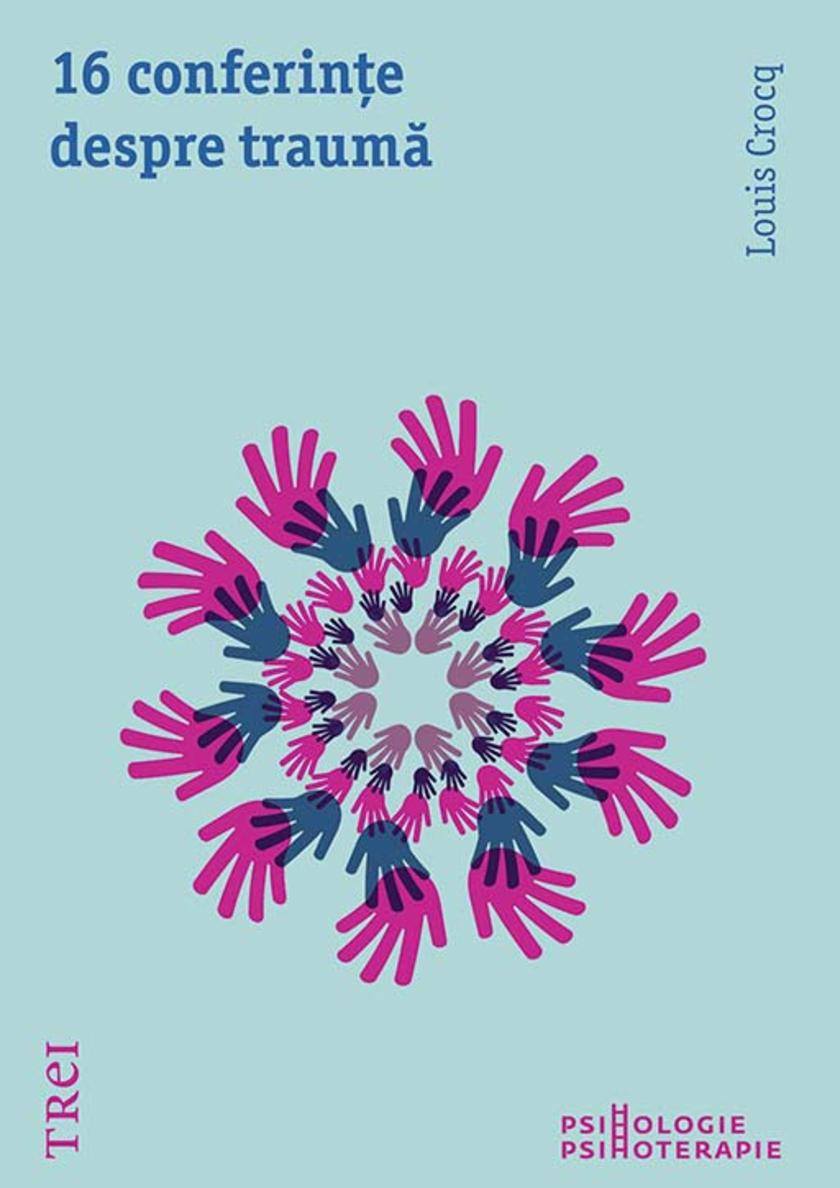
16 conferin?e despre traum?
¥81.67
Mivel az informatika egyre inkább átsz?vi életünket, a szoftverek min?ségével kapcsolatos elvárások egyre magasabbak. Egy szoftver el?állítása azonban nem csak programozásból áll, és a programozóktól sem lehet elvárni emberfeletti képességeket, a megrendel? el nem mondott elképzelésének t?kéletesen megfelel?, teljesen hibamentes munkát, mivel csak az nem hibázik, aki nem is dolgozik. Az informatika világában a szoftvertesztel?k azok, akik a szoftverek min?ségéért dolgoznak. A szoftvertesztel?k?n óriási felel?sség nyugszik és folyamatosan elvárások kereszttüzében kell helytállniuk. Mégis, szoftvertesztelés nélkül a legt?bb szoftver el sem jutna a felhasználókig, vagy ha igen, akkor megjelenésük botrányokkal, valamint óriási anyagi és erk?lcsi veszteségekkel járna együtt, a rengeteg fel nem tárt programhiba miatt. Szoftvertesztelésre és tesztel?kre ezért mindenképp szükség van. K?nyvünk a professzionális szoftvertesztelés alapjaival ismerteti meg az olvasót, számos gyakorlati példával f?szerezve, mell?zve a száraz, pusztán technikai megk?zelítés? leírásokat, kezdve a szoftvertesztelés általános bemutatásától, a fogalmak ismertetését?l, majd részleteiben tárgyalva a szoftvertesztelést és annak helyét a fejlesztési folyamatokban. Segítségével jó adag gyakorlati ismerettel vértezhetjük fel magunkat, melynek során valódi, a tesztelést támogató alkalmazásokat ismerhetünk meg, biztos alapot nyújtva a szoftvertesztelésben elhelyezked? leend? és gyakorló szakembereknek a mindennapi munkájukhoz. A szoftverteszteléssel most ismerked? szakembereknek és laikusoknak kimondottan hasznos lehet ez a k?nyv, de fejleszt?k és cégvezet?k számára is tartogat hasznos információkat, melyek segítségével bevezethetik, illetve hatékonyabbá tehetik a szoftvertesztelést munkájuk során.
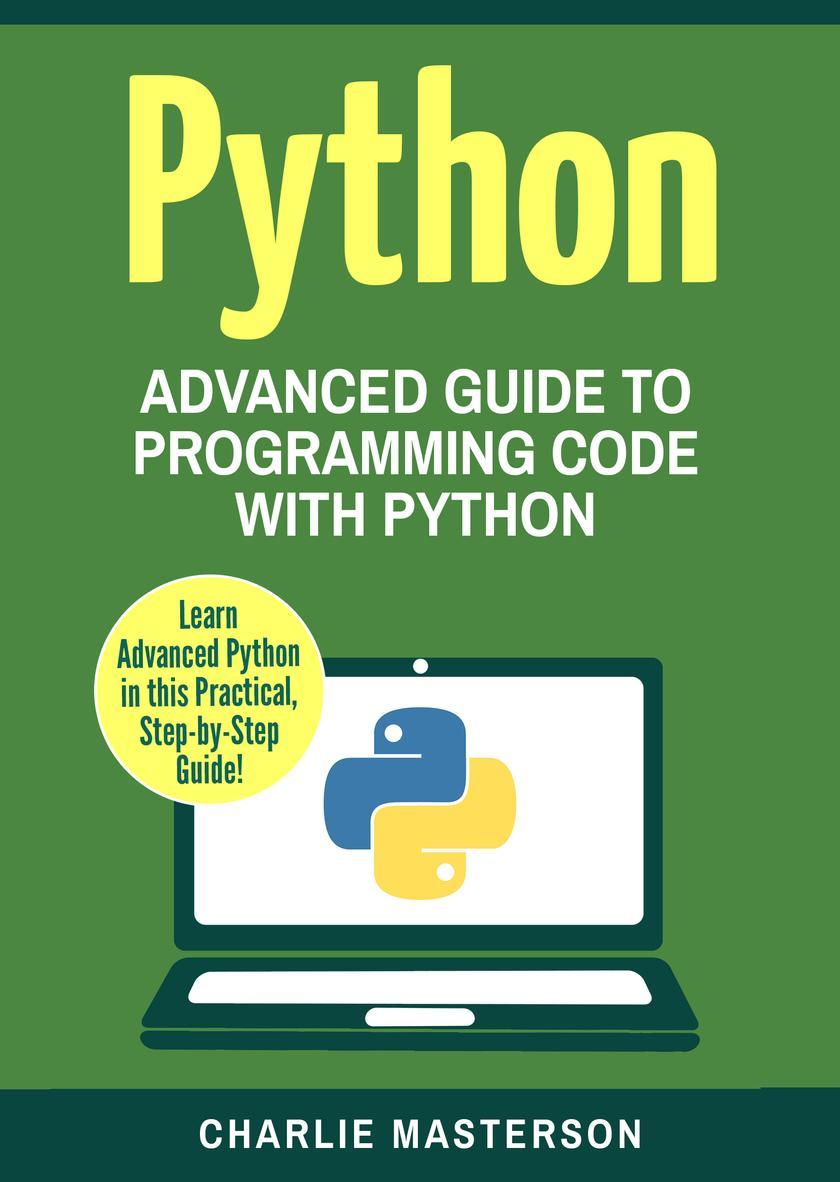
Python: Advanced Guide to Programming Code with Python
¥24.44
Python: Advanced Guide to Programming Code with Python

The Beginner’s Short Guide to Pinterest: How to Promote Products on Pinterest
¥8.09
The Beginner’s Short Guide to Pinterest: How to Promote Products on Pinterest
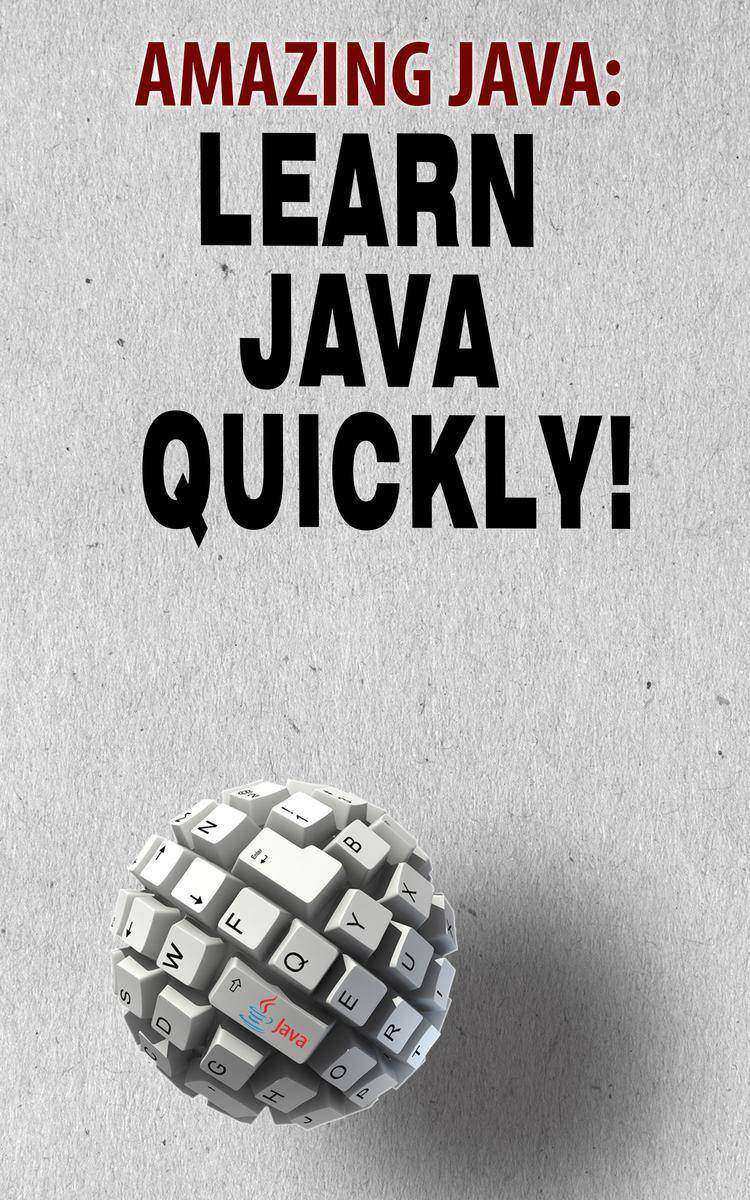
Amazing Java: Learn Java Quickly
¥24.44
Amazing Java: Learn Java Quickly
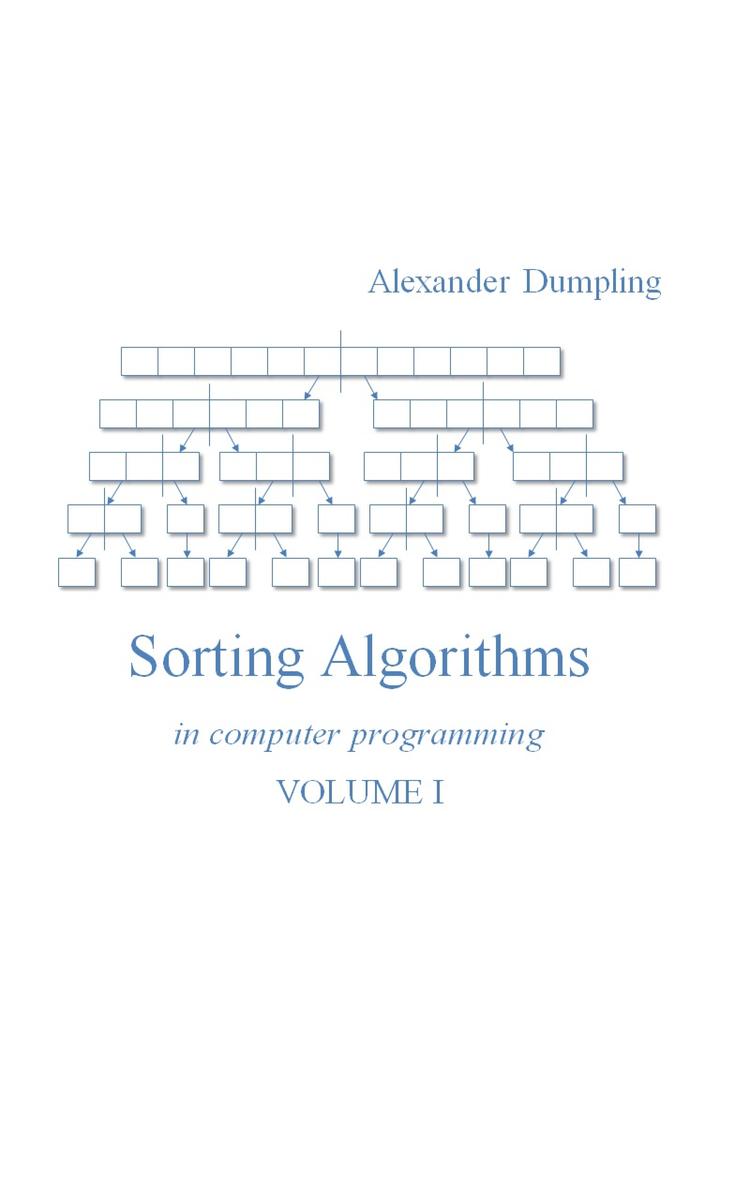
Sorting Algorithms In Computer Programming: Volume 1
¥163.50
Sorting Algorithms In Computer Programming: Volume 1

50 most powerful Excel Functions and Formulas
¥24.44
50 most powerful Excel Functions and Formulas

15 Most Powerful Features Of Pivot Tables: Save Your Time With MS Excel
¥24.44
15 Most Powerful Features Of Pivot Tables: Save Your Time With MS Excel

Blockchain: The complete guide to understanding Blockchain Technology for beginn
¥24.44
Blockchain: The complete guide to understanding Blockchain Technology for beginners in record time




 购物车
购物车 个人中心
个人中心



